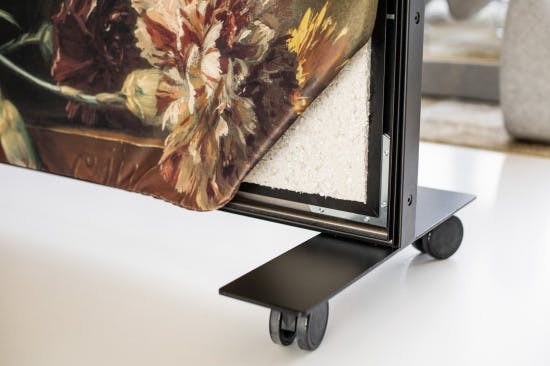- Home
- Improving the acoustics
Improving the acoustics
Good acoustics are becoming increasingly important in creating a pleasant living and working space. The current trend is to use a lot of glass and other hard materials. The lack of soft materials means that sound repeatedly reverberates off the walls, floor and ceiling. Poor acoustics can be extremely tiring, and noise pollution for a longer period can even harm your health.
Improve the acoustics in a stylish way
Textile frames filled with acoustics are a great solution to improve the acoustics in a space. The size of the frame, the type of acoustic material and the thickness determine how much annoying sounds are absorbed. You can choose from three different acoustic materials, each with its own advantages and properties.




Therm Acoustic
Therm Acoustic is a sustainable acoustic material, made of polyester fibres, whereas 60 percent of which is recycled (PET bottles). The material is available in 10 mm thickness for a light absorption value, in 25 mm thickness for a good absorption value and 40 mm thickness for an excellent absorption value. Therm Acoustic had a B1 fire class. Read more.

Basotect®
Basotect® is made of melamine resin foam, lightweight and because of its rigidity, it is very dimensionally stable. The material has a thickness of 45 mm and can be supplied with a milled U or L-shape. Because the material can be milled with a U-shape, it can also be used in a freestanding or suspended frame. If desired, the acoustic material can be supplied without finishing. Basotect® has a B1 fire class. Read more.

Absorption table acoustic materials
The quality of an acoustic material is determined by its absorption value. This value indicates how much sound is absorbed. The most ideal value is 1, which corresponds to 100% absorption. The area marked in grey is the speech area; this is usually the focus for an average room.

